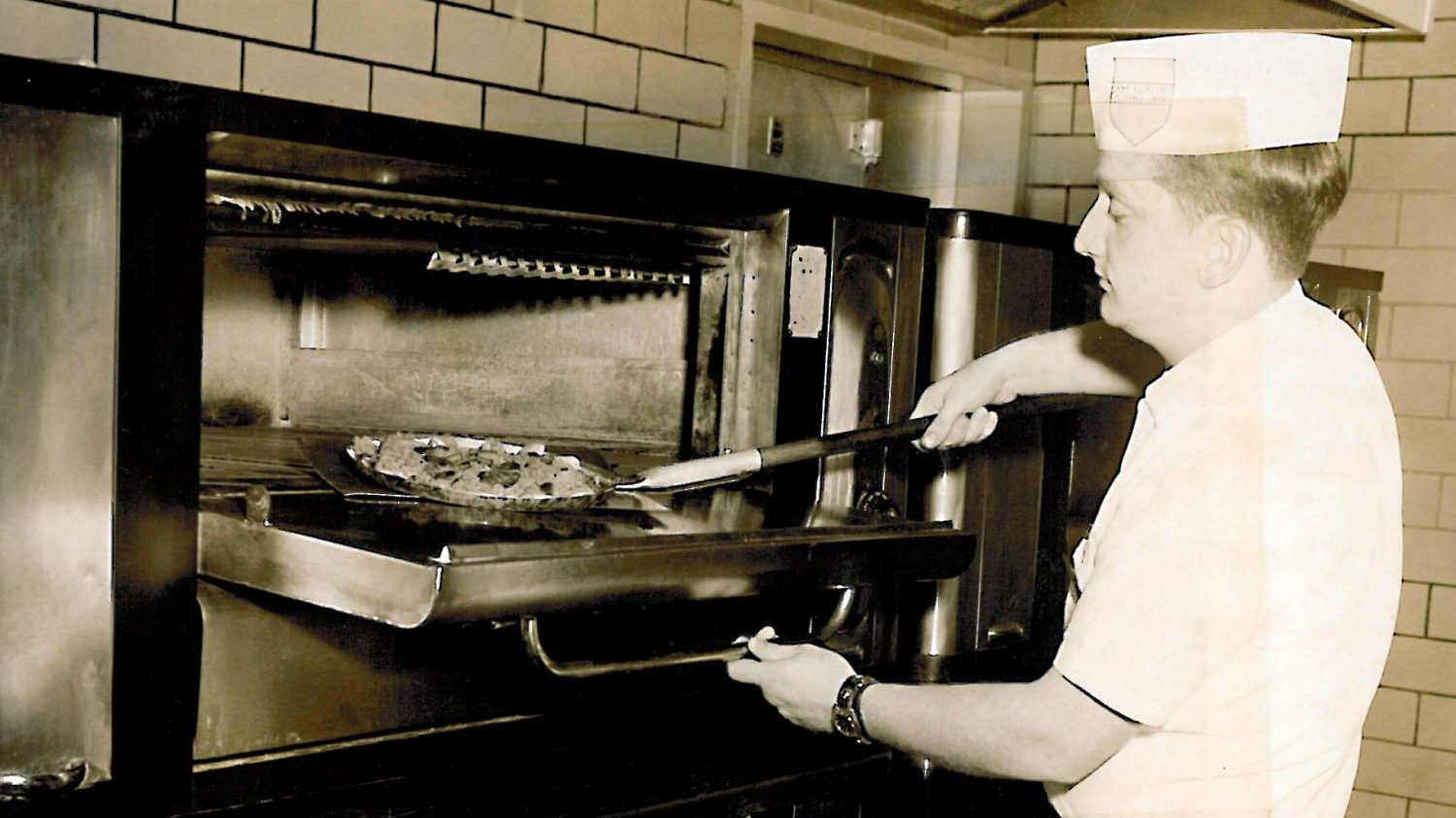#FlashbackFriday: Some Slices of Pizza’s History at the Exchange

October probably conjures up thoughts of Halloween and trick-or-treating but, since 1984, it has also been National Pizza Month. It was started by Gerry Durnell, a pizzeria owner in the wonderfully named town of Santa Claus, Indiana, who established the month to generate business for his restaurant and for his magazine, Pizza Today, which published its first issue that month.

A Fort Riley pizza restaurant in 1972.
The Exchange has a strong relationship with pizza, which is available at installations in all regions. It may be hard to imagine that pizza was once considered a novelty—and not all that long ago.
In a story in the June 1958 Exchange Post with the headline “Pizza Pushing Hot Dog in Popularity Battle; Sudden Rise Due to Serviceman Acceptance,” the writer still felt it necessary to provide a pronunciation guide for pizza (“pronounced peetzuh”).
“Not more than five years ago, [pizza] was relatively unheard of on a national scale,” the story says, “with the exception of areas with a high concentration of population of Italian origin.”
The article credited pizza’s popularity in the Armed Forces to the Marine Corps and the Navy (“Is there anything inherent in pizza that makes it particularly a sea-going delicacy?”). But the Army and the Air Force, through their exchanges, were “rapidly climbing aboard the pizza wagon.”
Exchange pizza sales were estimated at roughly 3,000 a week—but the Norfolk Naval Base Exchange and the Marine Corps’ Camp Lejeune Exchange sold a combined 60,000 pizzas a month.
The article described the pizza-making operation at the Shaw Air Force Base BX cafeteria, where pizzas were assembled with pre-baked shells, pre-mixed sauce and already-diced cheese: “While Exchange cafeterias lack the showmanship of the traditional Italian pizza chef in scaling pizza dough through the air … the customer has a vicarious interest in watching the sauce ladled and cheese sprinkled.”
Shaw Airmen had a choice of plain cheese or pepperoni, “which loosely translated means mouth-watering Italian sausage.” A photo accompanying the article depicted five Shaw Airmen scarfing down pizza slices. “As this representative group indicates,” the caption read, “pizza goes with coffee, beer and even chocolate milk.”
A few years later, the May 1961 Exchange Post ran a brief story headlined “Here’s a New Idea: ‘Phone a Pizza’” about a new service at the Fort Campbell PX in which a concessionaire equipped five mobile vans with ovens so that hot pizza could be delivered to customers’ doors. An accompanying photo showed a Volkswagen Bus with the words “Lunch Time Supper Time Snack Time: Anytime Is Pizza Time” across the front.
In the spring of 1986, Pizza Inn became the first brand-name restaurant in the Exchange system when it opened a location in Fort Carson, Colo. Opening-day sales topped $4,500 and remained strong enough that the location’s daily sales rivaled the weekly sales at an average U.S. pizza restaurant. At the request of the post’s Jewish chaplain, the Pizza Inn even developed a kosher pizza, using preparation and baking techniques separate from the establishment’s other pizzas.
Months later, the Exchange launched its own fast-food pizza program with Anthony’s World’s Greatest Pizza. In August 2020 at Nellis Air Force Base, the Exchange opened Automatic Pizza Kitchen—a pizza-vending machine that was the first of its kind at the Exchange.
Today, the Exchange still operates Anthony’s; Blaze Pizza, Domino’s, Hunt Bros., Papa John’s and Pizza Hut operate concessions at various Exchange locations worldwide.
Sources: Exchange Post archives, Exchange History Flickr, National Day Calendar (nationaldaycalendar.com)


For those that remember the Brown Derby at RAF Upper Heyford …… The Pizza was fantastic and they were always packed out.
Amen Brother!